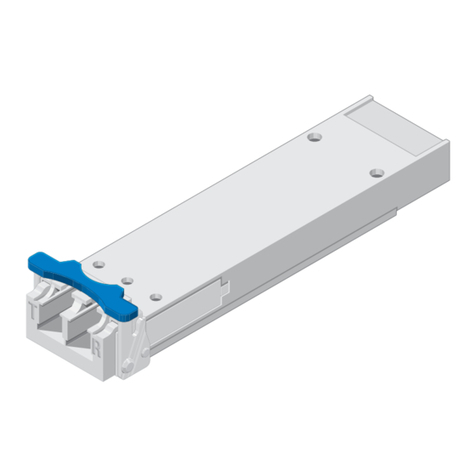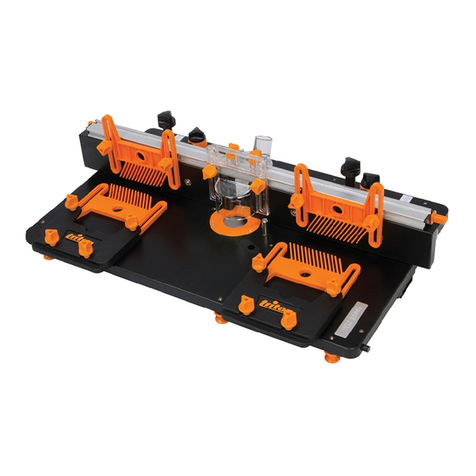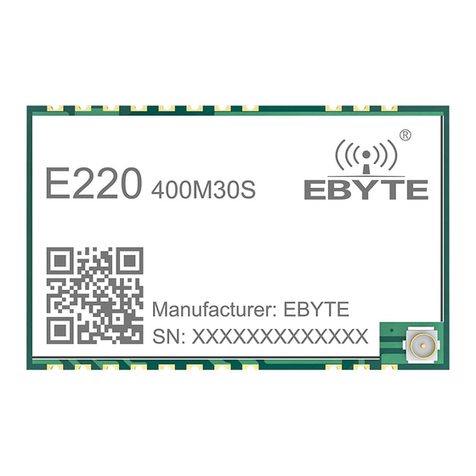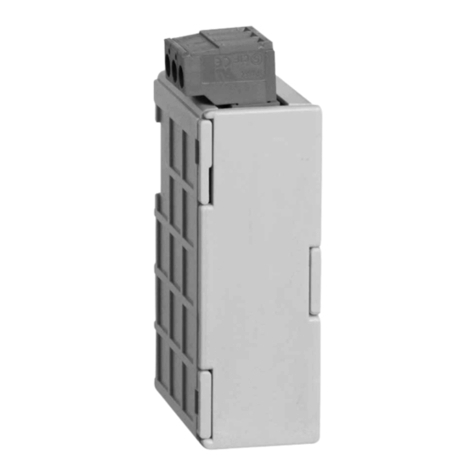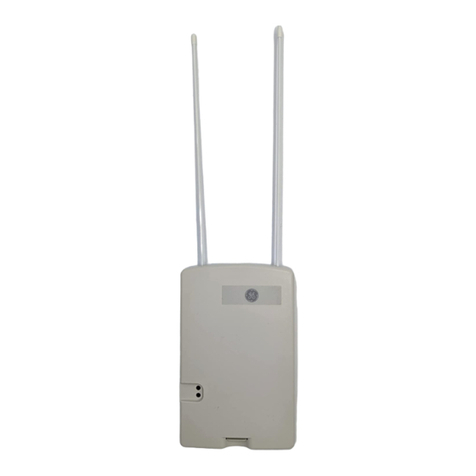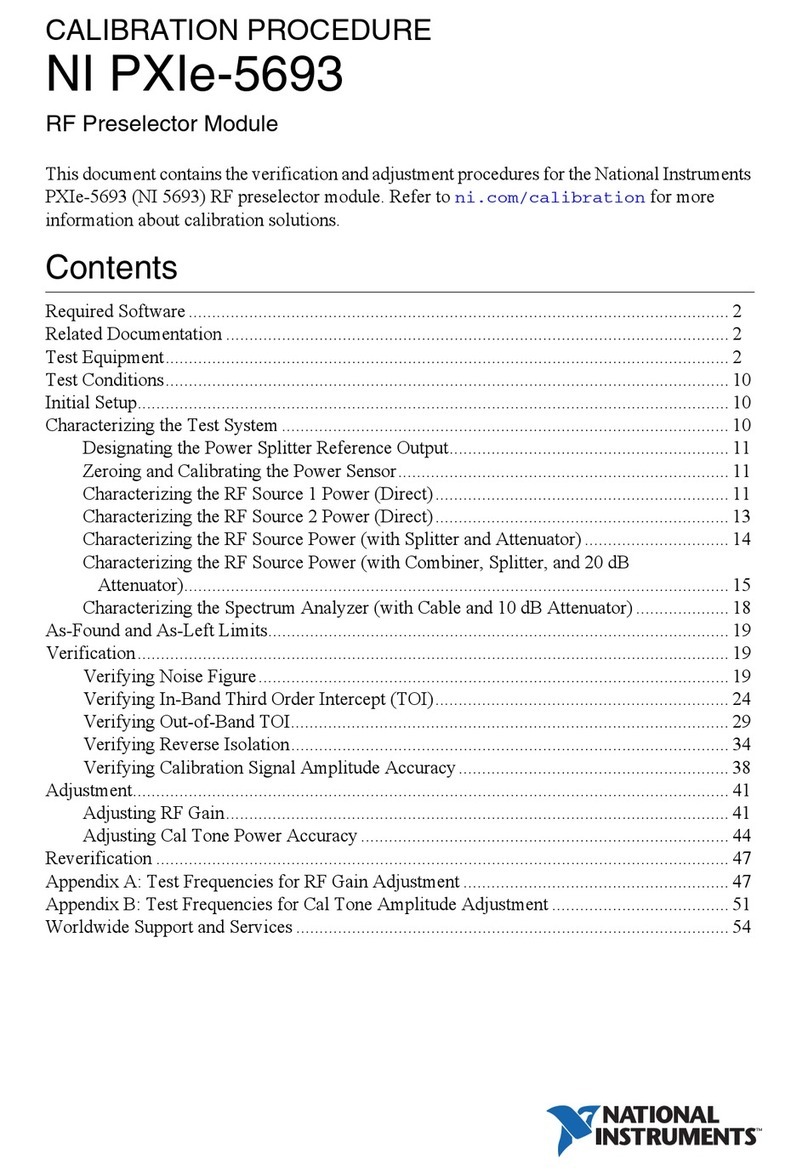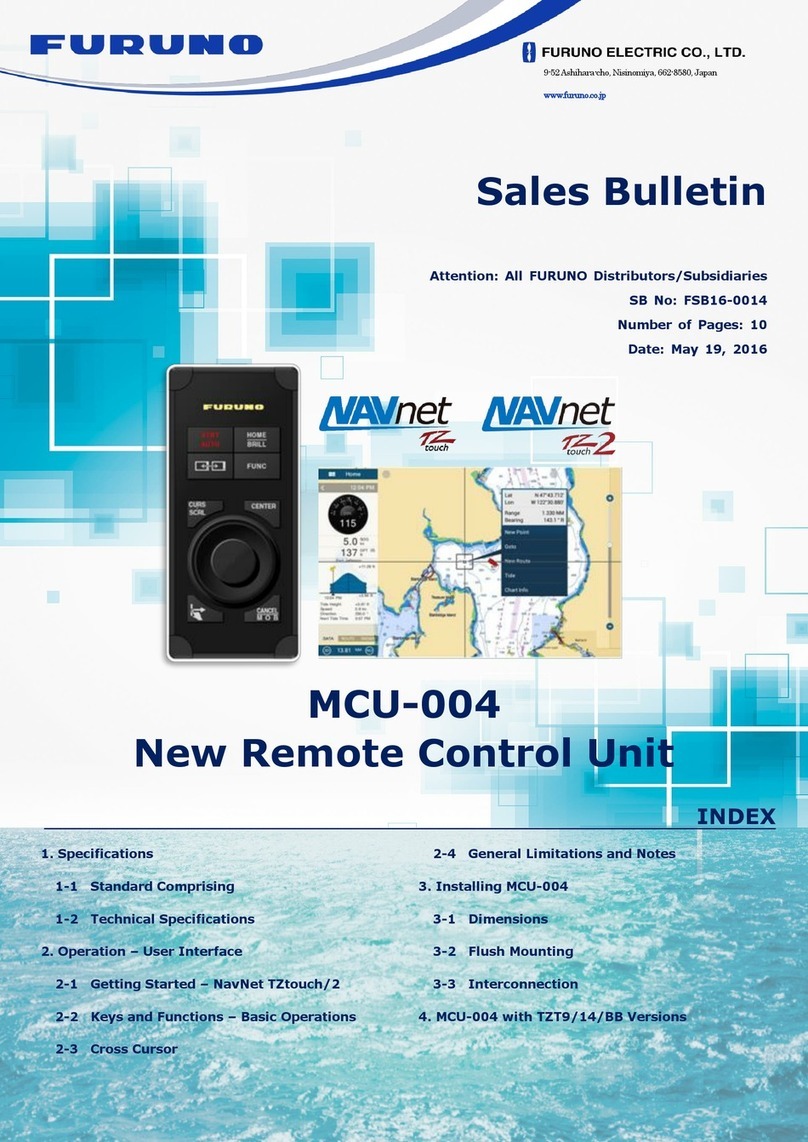GAYLORD RSPC-ESP-OW Series User manual

Rev 09
Technical Manual
For
Installation, Operation
And Maintenance
Of
The Gaylord “ClearAir”™
Model RSPC-ESP-OW Series
Pollution Control Unit
GAYLORD INDUSTRIES
10900 SW Avery Street – Tualatin, Oregon 97062 USA
Email: info@gaylordventilation.com Toll Free 800-547-9696 – Fax 5023-692-6048
www.gaylordventilation.com

Page ii
All rights reserved. No part of this book may be reproduced, stored in a retrieval
system, or transmitted in any form by an electronic, mechanical, photocopying,
recording means or otherwise without prior written permission of Gaylord
Industries.
©Copyright 2016, Gaylord Industries
The manufacturer reserves the right to modify the materials and
specifications resulting from a continuing program of product
improvement or the availability of new materials

Page iii

Page iv
This Page Intentionally Left Blank

Page v
Table of Contents
Chapter 1 – Introduction
About the Manual …………………………………….………………………………………………………………………………….. 1-1
Introduction…………………………………………….……………………………………………………………………………………..1-2
Basic Facts About Smoke …………………………..…………………………………………………………………………………. 1-2
Basic Facts About Odor …….……………………………………….…………………………………………………………………. 1-3
Grease Removal - The Important First Step ………………………………………………………………………………….. 1-3
Specifications ……………………………………………………………………………………………………………………………….. 1-4
Chapter 2 – Models and Configuration
Model Number Chart ………………………………….……………………………………………………………………………….. 2-1
Typical Installation ………….……………………………………………………………………………………………………………. 2-3
Sample ClearAir Configurations ……………………….…………………………………………………………………………… 2-5
Chapter 3 – Daily Operation
Overview ……………………………………………………………………………………………………………….…………………….. 3-1
Starting the exhaust fan and ClearAir Unit ………………………………………………………….……………………….. 3-1
Stopping the exhaust fan and starting the ClearAir Wash Cycle ……………………………………………………. 3-3
Fire Cycle …………………………………………………….………………………………………………….……………………………. 3-4
Chemical Fire Extinguishing Systems …………….………………..……………………………………………………………. 3-4
Maintenance - Detergent …………………………………………………………………………………………………………….. 3-5
Maintenance – Spray Odor Control ……………….……………………………………………………………………………… 3-5
Periodic Pressure Wash or Steam Cleaning ………………………………………………………………………………….. 3-5
Chapter 4 – Smoke Control Section
Principle of Operation………..…………………………………………….…………………………………………………………… 4-1
Smoke Control – Wash Cycle …………………….…………………….……………………………………………………………. 4-2
Smoke Control – Wash Cycle Water Consumption ………….……………………………………………………………. 4-7
Smoke Control – Wash Cycle – Recommend Detergent ….……………………………………………………………. 4-8
Smoke Control - Maintenance ……………….……….……………………………………………………………………………. 4-10
Smoke Control – Troubleshooting ………………….………….…………………………………………………………………. 4-20
Smoke Control - Troubleshooting (Charts) ……………………………………………………..……………………………. 4-20
Smoke Control – Trouble Shooting
Green ESP Light Off Condition ……………………………………………………………………….……………………….. 4-22
Testing Voltages at the Cell Connection Points ……………………………………………….………………………. 4-23
Testing Door Safety Switch ……………………………………………………………………………….…………………….. 4-23
Testing Plunger Safety Switch …………………………………………………………………………………………………. 4-24
Transformer Voltage Test ……………………………………………………………………………………………………….. 4-25
Testing ESP Cells ……………………………………………………………………………………………………………………… 4-27
Shorting Cell Plates …………………………………………………………………………………………….…………………… 4-29
Replacing Ionizing Wires …………………………………………………………………………………….…………………… 4-30
Wash System – Troubleshooting ……………………………………………………………………………….………………….. 4-31
Wash System Troubleshooting Charts ………………………………………………………………….…………………. 4-31
Inadequate Washing of the ESP Cells …………………………………………………………………….………………… 4-34
Frequency of Wash Cycle ………………………………………………………………………………………..………………. 4-34
Length of Wash Cycle ……………………………………………………………………………………………….…………….. 4-34
Length of Delay Between Wash Cycles ……………………………………………………………………….…………… 4-34

Page vi
Table of Contents – Cont.
Clogged Spray Nozzle ………………………………………………………………………………………………….………….. 4-35
Oscillating Wash …………………………………………………………………………………………………………………….. 4-38
Wash Control Cabinet ……………………………………………………………………………………………………….……. 4-41
Detergent Pump …………………………………………………………………………………………………………………….. 4-41
Detergent Flow Ratio ……………………………………………………………………………………………………………... 4-46
Detergent Consumption ……………………………………………………………………………………………………….… 4-47
Detergent Flow Switch ………………………………………………………………………………………………………….… 4-47
Line Strainer …………………………………………………………………………………………………………………………... 4-48
Backflow Preventer ………………………………………………………………………………………………………………… 4-48
Water Solenoid Valve …………………………………………………………………………………………………………….. 4-50
Chapter 5 – Odor Control Section
Overview ………………………………………………….…………………………………………..………………………………………. 5-1
Media Panel Type Odor Control...….…………………………………………………………….………………………………… 5-1
Loose Fill Type Odor Control ..………………….……………………………………………………………………………………. 5-1
Odor Control Maintenance – Media Panel Type .……………………………………………..…………………………... 5-2
Odor Control Maintenance – Loose Fill Media ..….………………………………………………………………………….5-4
Spray Odor Control - Overview ………………………..……………………………………………..……………………………..5-6
Spray Odor Control – Setting Timers ………………….……………………………………………….………………………… 5-7
Spray Odor Control – Maintenance …………………….………………………………………………………………………... 5-7
Spray Odor Control Chemical ……………………………….………………………………………………………………………. 5-8
Chapter 6 - Exhaust Fan Section
Overview ……………………………………………………………………………………………………………………………………... 6-1
Initial Set-Up ………………………………………………………………………………………………………………………………… 6-1
Pre-Operational Maintenance ……………………………………………………………………………………………………… 6-2
Initial Fan Lubrication ………………………………………………………………………………………………………………….. 6-2
Idle Fan Requirements …………………………………………………………………………………………………………………. 6-3
Initial Operation …………………………………………………………………………………………………………………………… 6-3
Preventive Maintenance ………………………………………………………………………………………………………………. 6-3
Troubleshooting …………………………………………………………………………………………………………………………… 6-4
Chapter 7 – Parts
Overview ………………………………………………………………………………………………………………………………………. 7-1
Parts List – Miscellaneous ………………………………………………………………………………………………………………7-1
Parts List – ESP Cells ………………………………………………………………………………………………………………….….. 7-4
Parts List – Electrical Compartment …………………………………………………………………………………………….... 7-5
Parts List – Main Electrical Compartment ……………………………………………………………………………………… 7-6
Parts List – Wash Control Cabinet …………………………………………………………………………………………………. 7-7
Parts List – Detergent Pump …………………………………………………………………………………………………………..7-8
Parts List – Spray Odor Control …………………………………………………………………………………………………..….7-9

Page vii
Table of Contents – Cont.
Chapter 8 – Wiring Diagrams
Eight Diagrams Beginning on Page ………………………………………………………………………………………………... 8-1
Appendix “A” – Receiving, Rigging and Storage
Overview ………………………………………………………………………………………………………………………………………. A-1
Receiving ………………………………………………………………………………………………………………………………………. A-1
Safety Considerations ……………………..……………………………………………………………………………………………. A-1
Odor Control Media Short Term Storage ………………………………………………………………………………………. A-1
Exhaust Fan Receiving and Storage …………………………………………………………………………………………….… A-1
Rigging ……………………………………………………………………………………………………………………………………….… A-2
Appendix “B” – Assembly
Overview ……………………………………………………………………………………………………………………………………… B-1
Assembly Instructions ………………………………………………………………………………………………………………….. B-1
Appendix “C” - Installation
Installation Codes ………………………………………………..……………………………………………………………………….. C-1
Installation Precautions ……………………………………….……………………………………………………………………….. C-1
Appendix “D” – Nameplate
Sample Nameplate …………………………………………….…………………………………………………………………………. D-1
Appendix “E” – Cell Rotation and Filter Cleaning Log Sheet
Sample Log Sheet …………………………………………………………………………………………………………………………..E-1
Appendix “F” – Startup, Inspection and Tests
Overview ………………………………………………………………………………………………………………………………………. F-1
Pre Startup Requirements …………………………………………………………………………..………………………………… F-1
Pre Startup Check List ………………………………………………………………………………….……………………………….. F-1
Startup Inspection and Test Report Forms …………………………………………………….……………………………… F-2
Limited Warranty ……………………………………………………………………………………………..……. Inside Back Cover

Page viii
This Page Intentionally Left Blank

___________________________________________________________Chapter 1 – Introduction, Page 1-1
About this Manual
The purpose of this manual is to provide the Operator, Maintenance and Service personnel instructions for
operating, maintaining and troubleshooting the Gaylord ClearAir™ Pollution Control Unit, Model RSPC-ESP-
OW. This manual also includes information and guidance to contractors for the initial installation of the
Unit.
The manual is divided into chapters for easy reference to a particular subject. The pages in the chapters
are numbered with the Chapter number, then a dash, and then the Page number. So for example pages in
Chapter 2 are numbered 2-1, 2-2, 2-3 etc. Figures and Tables are numbered in a similar manner. For
example Figure 5-3-2 is on Page 5-3 and is the second figure. Please keep your manual in a convenient
location for so it can be accessed easily.
If you have any questions regarding the Gaylord ClearAir Unit please contact Gaylord Industries.
Web: www.gaylordventilation.com
E-Mail: [email protected]
Main Phone: 503-691-2010
Toll Free: 800-547-9696
This manual and other Gaylord product manuals may be downloaded from the Gaylord website:
www.gaylordventilation.com or be purchased by calling Gaylord Industries.

Chapter 1 – Introduction, Page 1-2___________________________________________________________
Introduction
Air Quality is becoming a major concern in America’s large cities and as a result, many commercial kitchens will
require pollution control equipment in their exhaust systems to comply with the increasing demands of
environmental control agencies. In addition, pollution control equipment is being used for kitchens in high-rise
buildings allowing the exhaust to discharge out the side of the structure which saves the cost of running the
duct up many floors to the roof.
Pollution control in kitchen exhaust systems has typically been accomplished by any one of the following
methods - gas fired incinerators, scrubbers, filtration units or electrostatic precipitators. Incinerators and
afterburners literally burn the pollutants and, while effective, can be very costly and hazardous to operate.
Scrubbers consist of a water bath and extraction baffles to remove the pollutants and though quite effective on
grease removal, they typically require the addition of high efficiency filters to abate smoke below control
agencies’ standards. Filtration units use a series of impingement filters to remove the pollutants and if done
properly can be quite effective on both smoke and grease.
The Gaylord pollution control unit, trademarked ClearAir,
can be manufactured with either electrostatic
precipitation (ESP) or Filtration (TPF). Gaylord Industries has been manufacturing ESP’s specifically designed for
commercial kitchen exhaust systems since the early 1970’s, longer than any other manufacturer.
However, when initial cost is a greater concern the TPF unit is a sound alternative.
The ClearAirESP unit is available in several configurations, as illustrated on the following pages, ranging
in capacity from 1000 to 32,000 CFM (472 to 15,102 L/s). Most models can include exhaust fan and
odor abatement
equipment as an option.
Basic Facts About Smoke
Smoke particles are extremely small and not visible to the human eye unless thousands of them are
grouped together to form what we see as smoke. Individual particles are measured in units called
microns and one micron equals 1/25,400 of an inch (1/64,516 of a cm).
Smoke generated by commercial cooking equipment has a particulate size of 0.15 microns and it is these
very small particles that smoke abatement equipment must remove from the airstream. The amount of
smoke being discharged from a kitchen exhaust duct is measured in terms of its density, referred to as
opacity - the degree to which emissions block light. A 100% opacity level would be solid black and 0%
would be perfectly clear. Control agencies that have adopted smoke pollution ordinances are requiring an
opacity level of no more than 20%, which is a very light blue smoke.
Typically, heavy smoke producing cooking such as charbroiling creates an opacity level of 60% to 70%. Opacity
readings are taken by the human eye by viewing the smoke being discharged and then assigning a
percentage of opacity to
what is seen. Though this method is quite subjective, it is the method practiced
by control agency inspectors who are trained and certified in determining opacity percentages.

___________________________________________________________Chapter 1 – Introduction, Page 1-3
Introduction (Cont.)
Other more technical methods of determining opacity or particulate density are achieved through the
use of opacity meters and cascade impactors. This level of analysis is usually referred to as source
testing. Control agencies occasionally require this type of analysis and if so, the testing is conducted by
state certified contractors which can be quite costly and time-consuming. The efficiency of a pollution
control unit is based on how well it reduces the opacity level of a given airstream. The Gaylord ClearAir
unit will reduce the opacity level below 20%, thereby meeting the requirements of environmental control
agencies.
Basic Facts About Odor
Cooking odors (molecules) generated by the combustion of
animal and vegetable matter result in an
extremely complex mixture of reactive organic gases (ROG’s). A small percentage of these odors may be
absorbed by the grease particles but the vast majority exists separately in the airstream. The ROG
molecules
are much too small to be removed by any type of
filter and therefore, other methods must be used. There
are several methods with which to manage the odor. One method is to use a media bed. The three most popular
types of media bed are activated charcoal, which absorbs and retains the odor molecules, the use of an odor-
oxidant media (potassium permanganate) which oxidizes the molecules to solids and then retains them, and
a blend of the two. Another method involves the use of a liquid delivered with a finely atomized spray. This
spray performs a similar function to potassium permanganate in that it adsorbs or chemically neutralizes
odors. This process has the benefit of the end user being able to adjust the amount of spray and thus the
effectiveness and cost of the odor control.
The life of the media bed type of odor control is dependent upon several factors such as how much media is
used, type of odor, amount of odor molecules, grease loading and air temperature. Typically, any of the
above mentioned types of
media can remove 85% - 90% of the molecules. Determining the efficiency of odor
control can be very subjective, as testing is usually conducted by the human nose. More scientific testing is
available through ROG analysis, but this involves considerable costs.
Grease Removal - The Important First Step
Grease particles are also measured in terms of microns and grease generated by commercial cooking
equipment has a particulate size of 0.1 microns and up. Pollution control equipment is not limited to removing
smoke particles, but will also remove a majority of the grease particles remaining in the airstream.
Therefore, the grease extraction efficiency of the exhaust hood plays an important role in the operation and
performance of pollution control equipment.
Removal of grease particles before they reach smoke and odor control equipment will significantly
increase the smoke abatement efficiency and the life of the odor abatement media.

Chapter 1 – Introduction, Page 1-4___________________________________________________________
Specifications
General
Furnish one (1) Gaylord ClearAir Pollution Control Unit model RSPC-ESP series as manufactured by Gaylord
Industries of Tualatin, Oregon in accordance with the following:
The pollution control unit shall consist of a smoke control section, odor control section (optional) and an exhaust
fan section (optional) all built on a common base as an integral unit.
Smoke Control Section
The smoke control section shall contain one or more electrostatic precipitator (ESP) Cells to remove
smoke particles from the air stream to a level no higher than 20% opacity when operated in accordance
with the operation and maintenance guidelines. The ESP Cells shall be of a floating plate design to
eliminate plate warpage during high heat operation. The Cells shall be positioned on slide tracks so that they
may be easily removed through a hinged Cell access door(s). For ease of handling, individual Cells shall
weigh less than 54 lbs. There shall be removable, cleanable debris screens located immediately upstream of
the ESP
Cells and a moisture separator immediately downstream. An electrical panel mounted on the unit
shall contain the high voltage power pack assembly, safety disconnect switch, main disconnect switch,
fuses and a magnetic starter for the exhaust fan when fan is included. The safety disconnect switch shall
interface with the electrical panel access door such that when opened it will shut off service to the power
pack(s) and ground them to drain the residual electrical charge from both the power pack(s) and ESP Cells.
The ESP Cell access door shall interface with the electrical panel access door so that it cannot be opened
without first opening the electrical panel access door. The high volt- age power pack(s) shall be self-
limiting type and shall be self-contained. The electrical panel shall include indicating lights to monitor Cell
and transformer voltage. The main disconnect switch for the exhaust fan and control circuits shall lock
the electrical panel access door closed when in the “on” position. The unit shall contain one or more wash
manifold(s) with brass spray nozzles to wash the ESP Cells with hot detergent injected water each time the
exhaust fan is shut off.
Fire Detection
A thermostat, set at 250o F, shall also be located in the filter section to shut down the exhaust fan in the
event of a fire.
Optional Fire Damper for use in Canada
___The unit shall include a UL listed fire damper, with a 280o
F fusible link, located downstream of the
filters to prevent passage of fire to the duct downstream of the unit
Odor Control Options
___Media bed of 50/50 Blend Potassium Permanganate and
Carbon Blend
The unit shall be provided with odor control utilizing a media bed of 50% potassium permanganate 50%
carbon blend. There are two design methods of housing the media used in the ClearAir unit. One is called
the Loose Fill type and the other is called the Media Panel type.
___Loose Fill type – The odor control media shall be housed in steel reusable Media Modules that can be
replenished with Loose Fill media. There shall be a 30% pleated media After Filter located immediately
downstream of the Media Models.

___________________________________________________________Chapter 1 – Introduction, Page 1-5
Specifications (Cont.)
The Modules and After Filters shall be mounted into slide tracks to prevent air bypass around the ends. The
Modules and After Filters shall be removable through side access doors with lift and turn latches.
___Media Panel type – The odor control media shall be com- pressed into Media Panels that slide into Media
Modules. The Modules shall be mounted into slide tracks to prevent air bypass around the ends. The
Modules and shall be re- movable through side access doors with lift and turn latches.
___(optional) The unit shall be equipped with a 30% pleated media After Filter located immediately
downstream of the Media Models.
___The unit shall be equipped with a Single Pass Media Bed.
___The unit shall be equipped with a Double Pass Media Bed.
___The unit shall be equipped with a Triple Pass Media Bed.
Spray Odor Control
The unit shall be provided with a spray odor control system utilizing an odor neutralizer chemical. The
odor spray control cabinet shall be mounted on the side of the unit and shall contain a liquid spray
compressor piped to the spray nozzle in the fan plenum, adjustable delay timers with fuse protected
circuitry factory wired to the unit electrical panel. The cabinet shall include one 5 gallon container of
Gaylord Formula GS-710 Odor Neutralizer. The cabinet shall contain a heater to prevent freezing of the
odor neutralizer, if mounted outdoors.
Exhaust Fan Options
___Exhaust Fan (Standard Centrifugal Fan)
The unit shall include a centrifugal exhaust fan. The exhaust fan shall be an SWSI up-blast arrangement #9 or
#10 with a non-overloading BI or AF wheel. The motor, drives, bearings and fan mounting base shall be
located out of the exhaust air stream as required by the IMC (International Mechanical Code) and NFPA-96.
The fan shall be AMCA certified and bear the AMCA seal for performance. The fan housing shall be
constructed of heavy gauge steel. The fan bearings shall be heavy duty self-aligning pillow block type rigidly
mounted on heavy structural steel supports. The motor shall be P.E. rated, ODP three phase mounted on a
common base with the fan and shall be pre-wired to the electrical cabinet located on the unit. The electrical
cabinet shall include a disconnect switch, motor starter, overloads and fuses. The factory provided drive
assembly shall be adjustable pitch on 5 HP and smaller, fixed pitch on 7.5 HP and larger.It shall also be sized for
a minimum 1.5 service factor. After final system balancing, fixed pitch sheaves shall be provided and
installed by the air balancing contractor to provide proper flow at actual installed conditions.
___Exhaust Fan (Optional Tubular Fan)
The unit shall include a tubular centrifugal exhaust fan.The exhaust fan shall be an arrangement #10 with a non-
overloading BI, AF wheel. The motor, drives, bearings and fan mounting base shall be located out of the exhaust
air stream as required by the IMC (International Mechanical Code) and NFPA-96. The fan shall be AMCA
certified and bear the AMCA seal for performance. The fan housing shall be constructed of heavy gauge steel.
The fan bearings shall be heavy duty rigidly mounted on heavy structural steel supports. The motor shall be
P.E. rated, ODP three phase mounted on a common base with the fan and shall be pre-wired to the electrical
cabinet located on the unit. The electrical cabinet shall include a disconnect switch, motor starter, overloads and
fuses. The factory provided drive assembly shall be adjustable pitch on 5 HP and smaller and fixed pitch on 7.5
HP and larger. It shall also be sized for a minimum 1.5 service factor. After final system balancing, fixed
pitch sheaves shall be provided and installed by the air balancing contractor to provide proper flow at actual
installed conditions.

Chapter 1 – Introduction, Page 1-6___________________________________________________________
Specifications (Cont.)
Exhaust Fan Housing
The exhaust fan section of the unit shall be enclosed with the same material as the smoke control section.
There shall be a removable panel for access to the fan.
Unit Construction
The unit housing shall be constructed of a minimum of 16 gauge G90 bright galvanized steel. The
perimeter base shall be 12 gauge formed channel with lifting lugs at each corner and along the length as
required. The internal housing shall be externally welded liquid tight for compliance to the International
Mechanical Code and NFPA-96 grease duct construction requirements.
Fire Extinguishing System Options
Specifier Note: NFPA-96 requires a fire extinguishing system for protection of the smoke and odor
control sections and protection of the duct downstream of any filters or dampers. Not all authorities having
jurisdiction require protection. Check with your AHJ. If required, specify one of the following systems.
___Wet chemical system
Provide a complete factory mounted Ansul wet chemical fire extinguishing system, including nozzles
piping and detection runs. Pipe penetrating the unit cabinet shall use a UL listed fitting. System shall be
installed in accordance with the systems listing and NFPA-96. The Ansul Automan cabinet shall be mounted
on the side of the unit for easy access, certification and service.
___Water spray sprinkler fire system
Specifier Note: Units that are located indoors, or in locations that do not freeze, may be factory pre- piped
for a wet pipe building sprinkler system.
Provide a pre-piped water spray fire system installed in accordance with NFPA-96. The unit shall be piped
with one pendent type sprinkler nozzle located in the smoke control section, one in the odor control section, if
equipped with 50/50 media bed, and one in the exhaust fan section for interconnection to the building
sprinkler system by the appropriate trades. Pipe penetrating the unit cabinet shall use a UL listed fitting.
Nozzles shall be the bulb type rated at 325o F.
Check Out and Demonstration
Upon completion of installation, the entire pollution control system, including the kitchen exhaust
hoods, shall be commissioned by factory certified personnel. Start-up shall include checking all
functions of the ClearAir unit. The appropriate maintenance personnel shall be given a technical
manual and a complete demonstration of the system, including operation and maintenance procedures.
Upon completion of the commissioning, a detailed start-up report shall be made available to the architect
and owner certifying proper system operation. Changes required in fan drive components shall be performed
by the air balancing contractor under the direction of the factory certified person(s) performing the start-up.

________________________________________________Chapter 2 – Models and Configuration, Page 2-1
Model Numbers
The assigned model number of a ClearAir RSPC-ESP unit will indicate the number of Cell banks and if
equipped with spray odor control, single or double pass odor control, if it has an exhaust fan plus other
data. The following example shows the make-up of a model number.
The model number of your ClearAir unit along with other data can be found on the nameplate which is
attached to the electrical control panel on the ClearAir unit. Refer to Figure D-1-1 in Appendix D.
Model Number Chart
Standard Prefix of ClearAir Unit (Remote Smoke Pollution Control)
1 ESP = Single Pass Electrostatic Cells
2 ESP = Double Pass Electrostatic Cells
ESP Cell Configuration (WxH) – 1x1, 2x1, 3x1, 2x2, 3x2, 4x2, 3x3, 4x3, 3x4, 4x4
Nominal FPM ESP Cell Velocity
250 FPM = Heavy and Extra Heavy Duty Cooking
500 FPM = Light and Medium Duty Cooking
Type of Wash
OW = Oscillating Wash
Odor Control Option
SO = Single Pass Odor
DO = Double Pass Odor
SPO = Spray Odor
(BLANK) = No Odor Control
Total CFM
Exhaust Fan Option
EFS = Exhaust Fan, unhoused, spring Isolated
EFN = Exhaust Fan, unhoused, not spring Isolated
EFHS = Exhaust Fan, housed, spring Isolated
EFHN = Exhaust Fan, housed, not spring Isolated
(BLANK) = No Exhaust Fan
Fan Type
C = Centrifugal
T = Tubular
Fan Size
Fan Motor HP
Hand
R = Right Hand
L = Left Hand
RSPC –1ESP –3x2 –500 –OW –DO –9000 -EFHS –C -225 –15 -R ________________
Block 1 2 3 4 5 6 7 8 9 10 11
All blank if no exhaust fan

Chapter 2 – Models and Configuration, Page 2-2________________________________________________
Model Numbers (Cont.)
Odor Control (optional)
Section (SO, DO)
ESP Section
ESP Cell
Configuration
(3 x 2)
Air Flow
Right Hand Unit. (Right
Hand Access). Access
Side, R or L, Determined
by Facing the Unit with
the Inlet Airflow to back
of head.
ESP Cells Single Pass (1ESP)
Figure 2-2-1
Typical ClearAir Unit
Without Fan Enclosure
Debris Screens
or Impactor
Filters
Exhaust Fan Section (EFN)
Plenum Section
Optional Spray Odor (SPO)
Moisture Separator
Odor Media
(DO Shown)
Fan Type Centrifugal
(shown) or Tubular

________________________________________________Chapter 2 – Models and Configuration, Page 2-3
Typical Installation
Figure 2-3-1
Typical Arrangement with Water Wash Ventilator
with the Main Control Cabinet Serving Both the
Water Wash Ventilator and the ClearAir Unit

Chapter 2 – Models and Configuration, Page 2-4________________________________________________
Typical Installation (Cont.)
Figure 2-4-1
Typical Arrangement with Water Wash Ventilator with
the Main Wash Control Cabinet Serving the Water Wash
Ventilator and Sub Panel Serving the ClearAir Unit

________________________________________________Chapter 2 – Models and Configuration, Page 2-5
Sample ClearAir Configurations
The ClearAir unit is available in sizes ranging in capacity from 100 to 32,000 CFM (472 to 15,102 L/s).
Each unit is equipped
with Electrostatic Precipitators for smoke control, and may include and exhaust
fan, odor abatement equipment and an Ansul fire extinguishing system as an option. The following
illustrations are examples of the most common configurations.
1ESP = Single Pass Electrostatic Cells
2ESP = Double Pass Electrostatic Cells
AF = 30% After Filter - Optional
DO = Double Pass Odor Control
DS = Debris Screen
EFS = Exhaust Fan, unhoused, spring isolated
EFN = Exhaust Fan, unhoused, not spring
ld
EFHS = Exhaust Fan, housed, spring isolated
EFHN = Exhaust Fan, housed, not spring isolated
FD = Optional Curtain Fire Damper
MS = Moisture Separator
SO = Single Pass Odor Control
SPO = Double Spray Odor Control Cabinet

Chapter 2 – Models and Configuration, Page 2-6________________________________________________
Sample ClearAir Configurations (Cont.)
1ESP = Single Pass Electrostatic Cells
2ESP = Double Pass Electrostatic Cells
AF = 30% After Filter - Optional
DO = Double Pass Odor Control
DS = Debris Screen
EFS = Exhaust Fan, unhoused, spring isolated
EFN = Exhaust Fan, unhoused, not spring
isolated.
EFHS = Exhaust Fan, housed, spring isolated
EFHN = Exhaust Fan, housed, not spring isolated
FD = Optional Curtain Fire Damper
MS = Moisture Separator
SO = Single Pass Odor Control
SPO = Double Spray Odor Control Cabinet
Table of contents
Popular Control Unit manuals by other brands
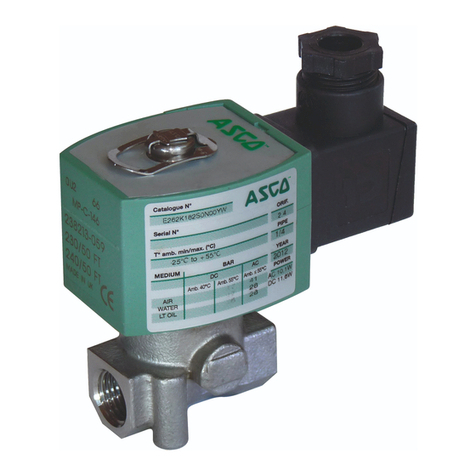
Asco
Asco 262 Series Installation and maintenance instructions
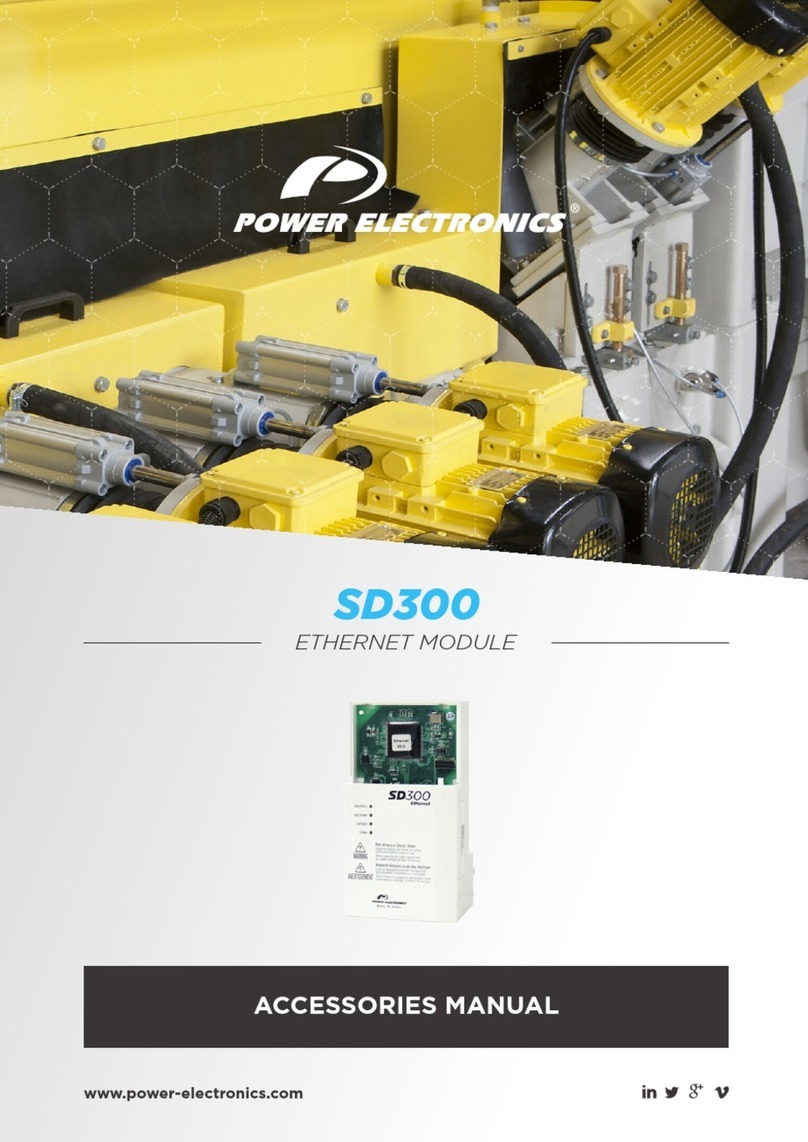
Power Electronics
Power Electronics SD 300 Series Accessories manual
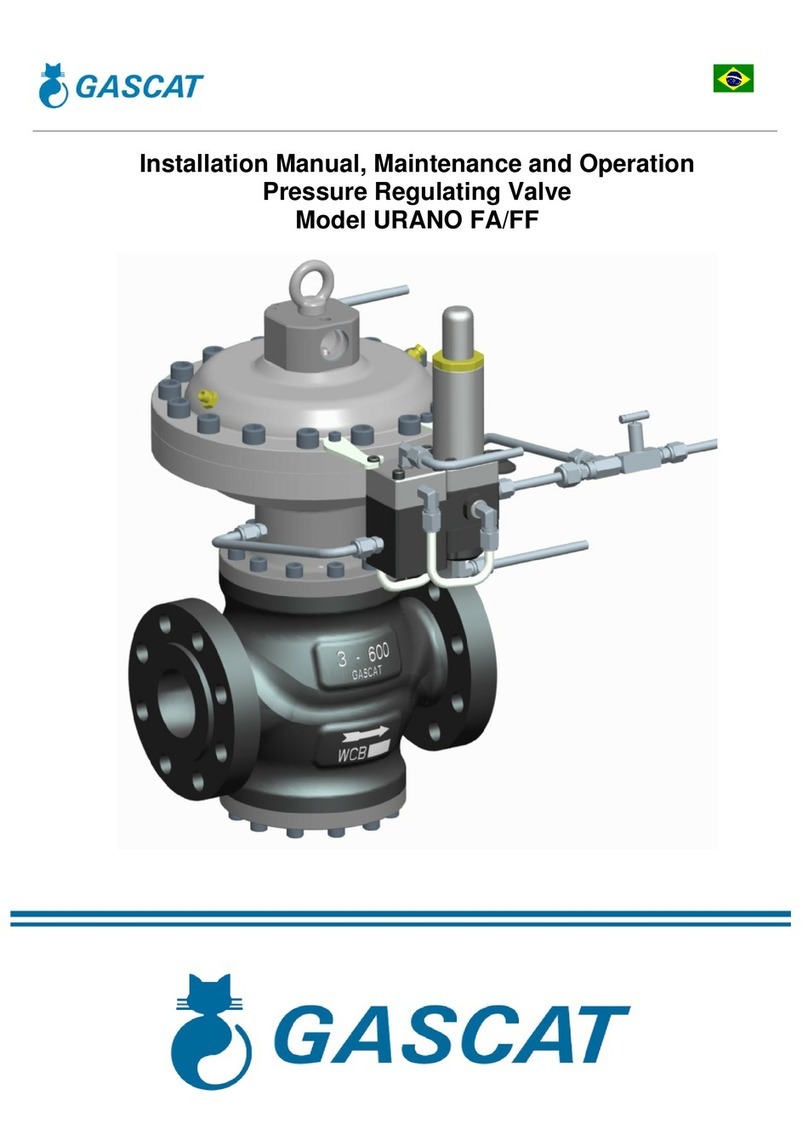
Gascat
Gascat URANO FA Installation manual, maintenance, use
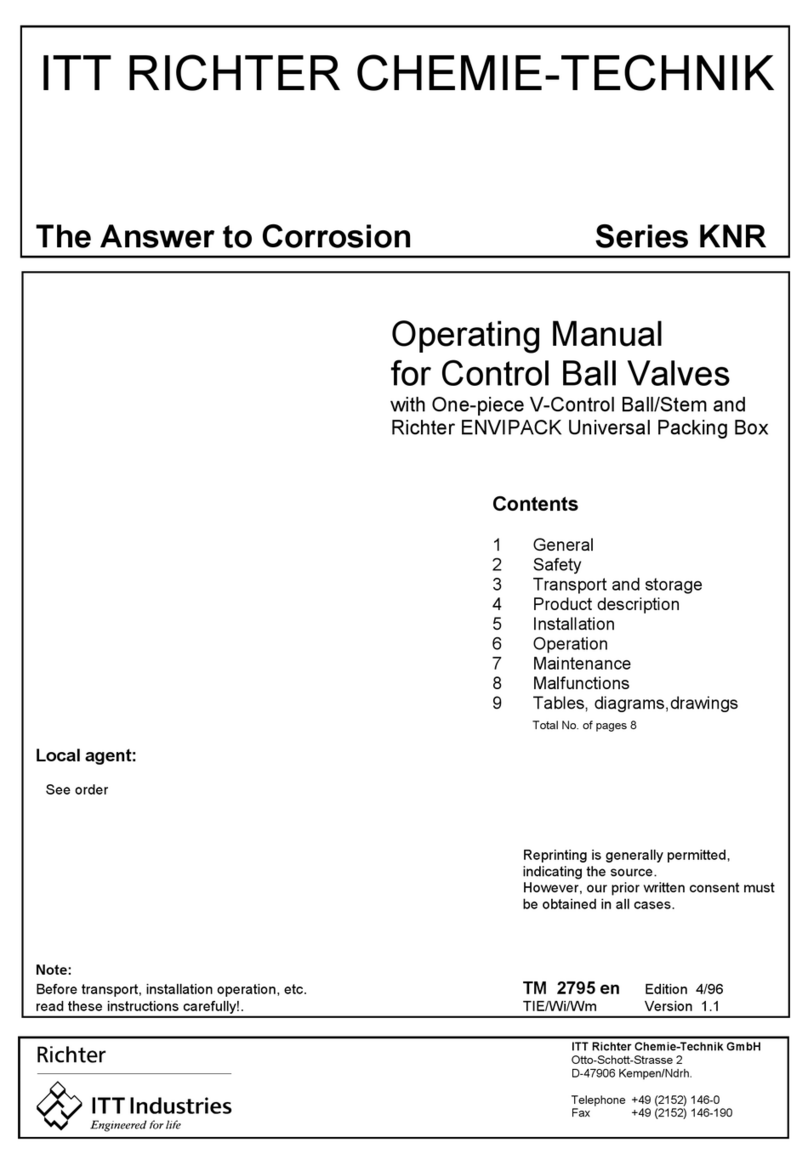
ITT Industries
ITT Industries KNR Series operating manual

Comfort365
Comfort365 WDDCK installation manual

Grow
Grow GM69-S user manual



